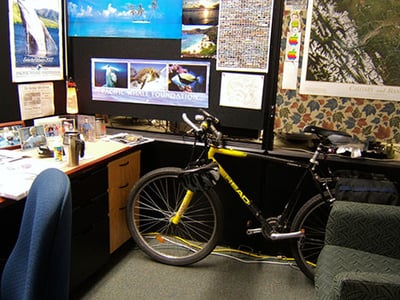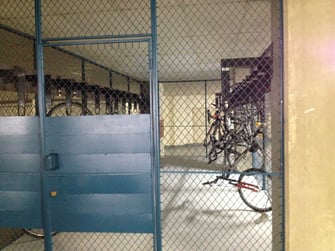Earlier this summer, the Urban Land Institute, a non-profit research organization focused on land-use and real estate development, held an event on Bicycle Friendly Design. The event, which was previously blogged about here, brought together real estate professionals, transportation planners and advocates for bicycle friendliness to discuss the emerging trend of designing buildings and neighborhoods to better support bicyclists and pedestrians.
As a follow up to the event, ULI conducted a survey of its members to see where they stand on bike-related trends and ideas. The results show growing support for biking and walking among the real estate development community.

As this write-up in the Washington Post points out, an overwhelming number of respondents agreed that the DC metro region would be better off if more people biked or walked to work. Similarly, many expect that walking and biking as a commuting mode will increase in the coming years.
This trend, if we can still call it that, is making developers take note. Increasingly, they are recognizing the need to promote alternative forms of transportation to their site, and as less people choose to drive to work, less parking is needed. Real estate blogs, such as Zillow.com, are starting to create content aimed at promoting bike-friendly design. By engaging in transportation demand management strategies with groups like Arlington Transportation Partners, new developments can create a culture that actively supports walking and biking to the site. Bike storage, access to showers and lockers, and employer-offered incentives can all help encourage the use of active transportation modes.
Another article, this one posted on DC Streetsblog.org, further points out that 80% of respondents are beginning to notice more bike amenities, such as secure parking and showers, in office buildings. Developers are increasingly recognizing the need to include bike programs in new office and residential buildings.
 Increased bike activity also supports the idea that new office buildings can be built with less parking capacity, as more individuals choose alternative modes of transportation to the site. This is something developers want - construction costs for parking are very high. But removing parking creates an additional strain on existing transportation systems. Arlington's development policies have long anticipated this shift in travel preferences. Most new developments are required to implement comprehensive transportation demand management plans that help offset the increased demand for transit services - including biking and walking. The real estate community is now starting to realize the benefits - and marketability - of some of these programs.
Increased bike activity also supports the idea that new office buildings can be built with less parking capacity, as more individuals choose alternative modes of transportation to the site. This is something developers want - construction costs for parking are very high. But removing parking creates an additional strain on existing transportation systems. Arlington's development policies have long anticipated this shift in travel preferences. Most new developments are required to implement comprehensive transportation demand management plans that help offset the increased demand for transit services - including biking and walking. The real estate community is now starting to realize the benefits - and marketability - of some of these programs.Both of these articles stress that support for walking and biking is being driven by a number of factors - a growing focus on health, and emerging preferences (especially among 'Millennials') for car-free or car-lite lifestyles.
As more people shift away from cars and into other modes - like biking, walking or transit, we are doing our best to make this shift easy for you. We are hard at work creating new infrastructure and programs, both on the roads and in the buildings to make your commute as easy as possible!

